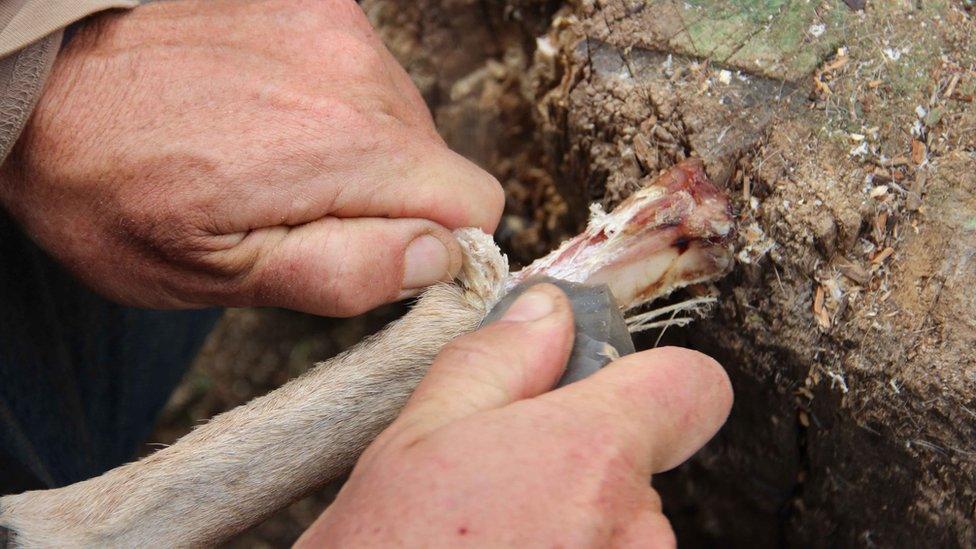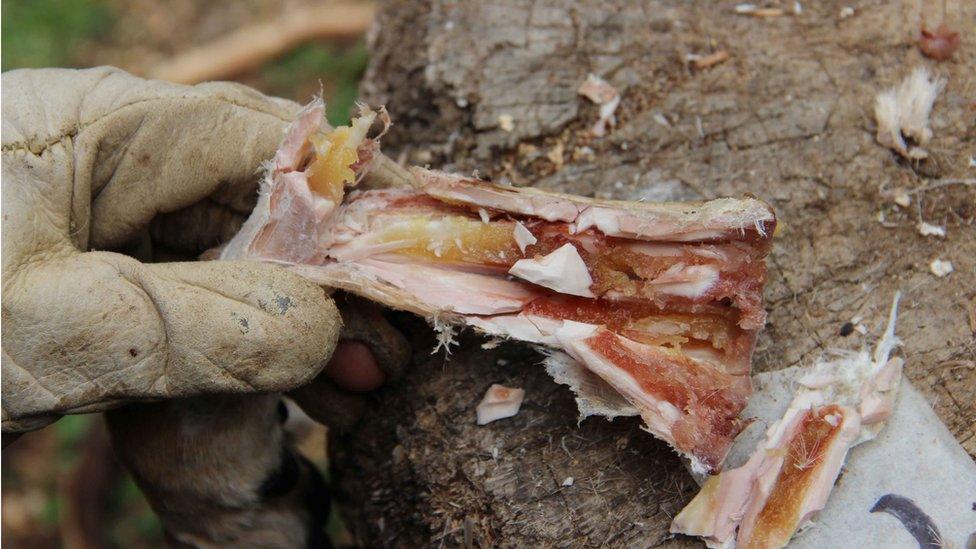Israel cave bones: Early humans 'conserved food to eat later'
- Published

In experiments, researchers removed skin from stored bones to match cut marks found on bone fragments
Scientists in Israel say they have found evidence that early humans deliberately stored bones from animals to eat the fatty marrow later.
It is the earliest evidence that humans living between 200,000 and 420,000 years ago had the foresight to anticipate future needs, they say.
Early humans had not previously been thought capable of such dietary planning.
Researchers analysed bone specimens at Qesem cave near Tel Aviv.
They identified cut marks on most of the bone surfaces - consistent with preservation and delayed consumption.
The researchers suggest the marks came about because the early humans had to make greater effort to remove skin which had dried on bones which had been kept longer.
The cut marks were found on 78% of the more than 80,000 animal bone specimens analysed.

You might also be interested in:

"Bone marrow constitutes a significant source of nutrition and as such was long featured in the prehistoric diet," said Ran Barkai from Tel Aviv University in Israel.
"Until now, evidence has pointed to immediate consumption of marrow following the procurement and removal of soft tissues."

Marrow inside a bone after six weeks of storage
Early humans in the area frequently hunted fallow deer. They brought the limbs and skulls of their prey to the cave while the rest of the carcass had the meat and fat removed where it had been killed, Professor Jordi Rosell of Spain's Universitat Rovira i Virgili said.
"We found that the deer leg bones, specifically the metapodials, exhibited unique chopping marks on the shafts, which are not characteristic of the marks left from stripping fresh skin to fracture the bone and extract the marrow," he said.
The researchers simulated conditions in the cave to determine that bone marrow would have remained nutritious for up to nine weeks after the animal had been killed.